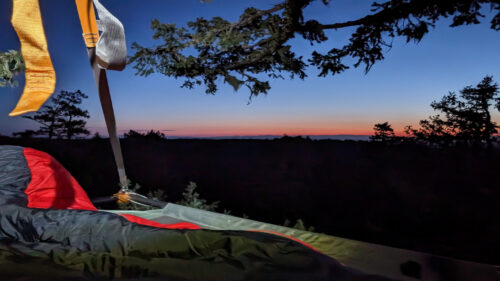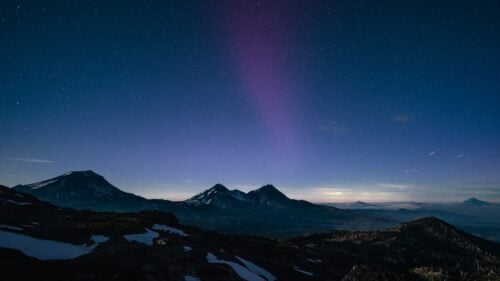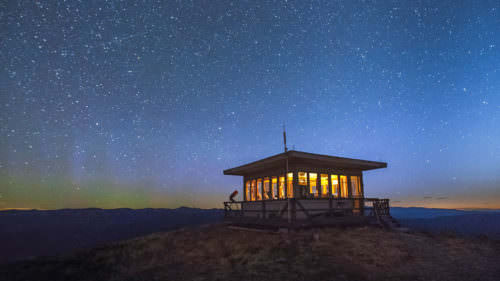The electric-red jet boat basks in the sunshine on the banks of the Willamette River in Newberg, beckoning us from the docks for an adventure. After boarding the custom-built boat for one-of-a-kind river cruises, Captain Scott Heesacker, a retired Portland area firefighter and owner of of NW Jet Boat Charter, outlines the evening ahead. He introduces us to Roger Pence, the astronomer on board who will navigate the night sky once we arrive at a remote beach about 20 miles upstream.
Minutes later, we’re soaring along the river at 30 miles per hour, an exhilarating pace that heightens the roar of wind and waves surrounding us. I turn to my friend Andrea and see my reflection — hair whipping wildly around and a wide smile as it feels like we are flying. We slow down as we pass canoers and kayakers, then stop and drift at various sections where Heesacker, an avid naturalist, knows we can spy wildlife like beavers or osprey.
While most stargazing trips focus on Oregon’s magnificent remote areas — especially the high-desert outposts, where you’ll find half a dozen official dark-sky areas designated by DarkSky International — the stars also align for those who want to stargaze closer to Portland.
Since Heesacker’s stargazing tours operate in August and October, peak sky-watching season, we jumped at the chance to join this sunset-to-starlight six-hour cruise.
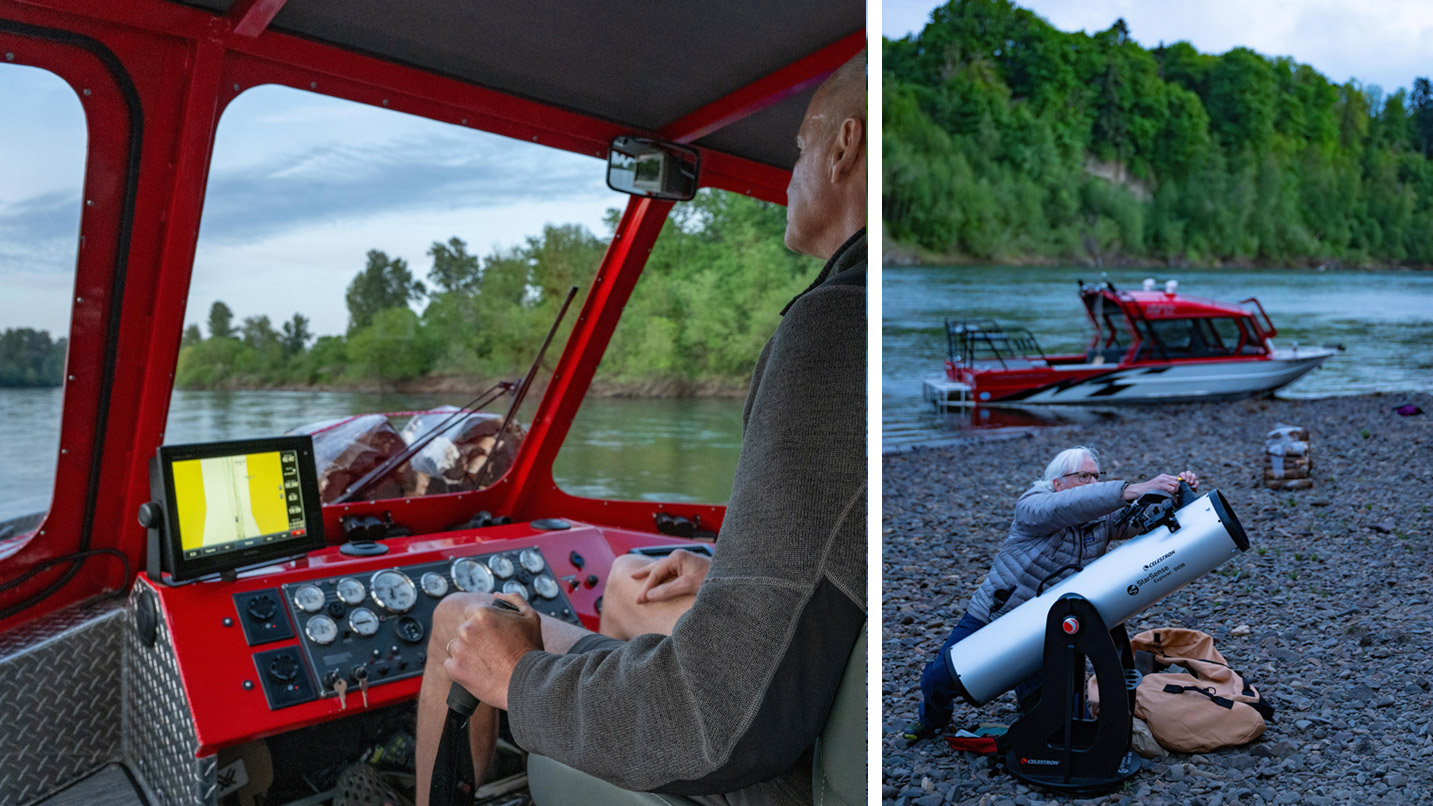
Shooting Stars on the Willamette River
As the golden hour sweeps in, we arrive at one of Heesacker’s favorite sections of the river, a heron rookery where the majestic birds return year after year. “The subtle changes on the river as we transition from day to night is always a highlight for me,” he says. He hands each of us a set of binoculars and we sit in the tranquil quiet of the waterway, admiring the simple nest perched in a sea of towering green.
We continue upriver and it begins to feel more wild. “There’s little development around us other than hop fields and hazelnut farms,” says Heesacker. It’s one of the reasons he launched this stargazing experience — the farther we travel from town, the more luminous the stars. The jet boat slows as we coast up to a sliver of a rocky beach where we enjoy sunset and a picnic from Red Hills Market around a cozy campfire.
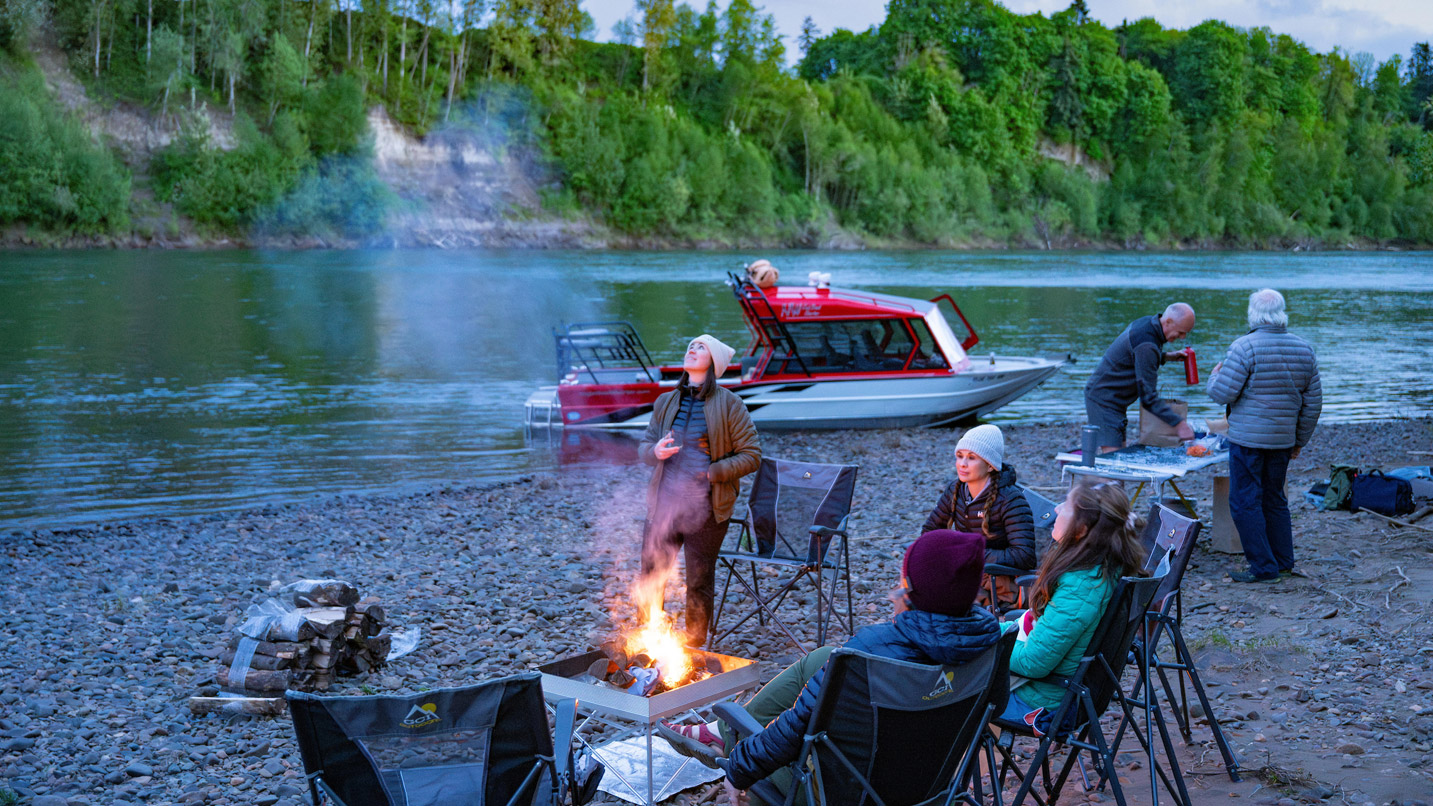
While Pence sets up his 6-inch Schmidt-Cassegrain telescope, our group sprawls across beach blankets, pointing out constellations as they sprinkle across the dark sky. It’s a lucky night. In the first 10 minutes, we see the mystical beauty of the Milky Way and two shooting stars — which always feels nothing short of magical.
While part of the excitement about stargazing is the unpredictability of what you might see, we are in prime season for sky-watching. We take turns peering through the giant telescope, which Pence navigates to numerous cosmic beauties, including the golden disc of Saturn and Messier 13, a globular cluster of over 100,000 stars in the constellation of Hercules.
Other celestial objects he illuminates include the Andromeda Galaxy (which contains an estimated 1 trillion stars) and others ranging from nebulae to star clusters. The return boat ride feels like a dream. We zoom across the river, immersed in the quiet midnight sky and the shimmer of stars above — and completely filled with wonder.

Stargazing From Vineyards and an Observatory
There’s no place like the Willamette Valley to pair planet viewing and pinot noir. Luckily, the Carlton Observatory partners with a host of local wineries and vineyards to host evening star parties from July through October. In between wine tasting, you’ll mingle with expert astronomers — including Pence, who works with the observatory — and peer through telescopes. On clear nights, you can usually see Jupiter and Saturn — and sometimes even galaxy clusters 2.5 million light-years away.
Look for summer star parties at Raptor Ridge Winery, Chris James Cellars, Bella Vida 360, Celestial Hill Vineyard and Black Dog Vineyard. All of these spots aim for minimal light pollution and promote dark skies. See more Oregon municipalities preserving dark skies here. Proceeds from these winery star parties benefit the nonprofit’s goal to create a science center and planetarium for the public at the Evergreen Aviation & Space Museum in McMinnville.
You can also swing by the aerospace museum Friday through Sunday to visit the airy glass-walled corner devoted to the Observatory’s impressive collection of telescopes. All of the telescopes are on wheels, so volunteers can easily roll them out onto a nearby patio for Telescope Tuesdays. These free mini star parties begin at dusk every (clear) Tuesday evening from August 26 through October 28; start times vary based on sunset.
Guided by retired astronomy teachers and other volunteer experts, you’ll find it easy to see marvels like Jupiter’s four largest moons and Saturn’s ethereal rings while learning more about black holes or the life cycle of stars.
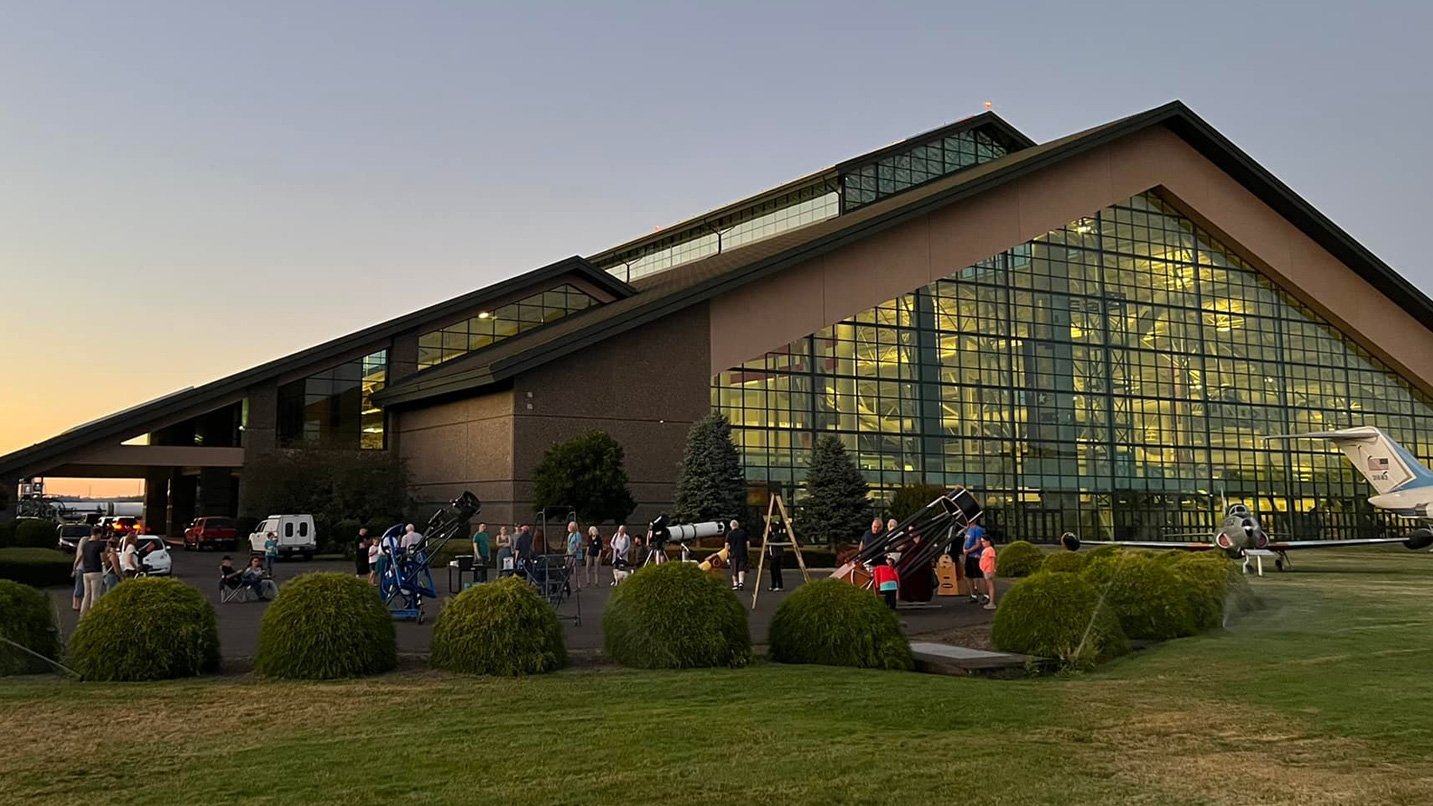
Star Parties and Planetariums With Local Astronomy Clubs
Many astronomy clubs throughout the Willamette Valley invite visitors of all ages to seasonal star parties, where you can view constellations and so much more. Depending on the time of year, you might spot meteor showers, lunar and solar eclipses, and other celestial wonders through telescopes and binoculars of all sizes. If there is a special occurrence like an alignment of planets, you may even find opportunities for winter star-party events, but most occur in the warmer months.
Salem’s Night Sky 45 Astronomy Club promotes the enjoyment and education of astronomy for members and the general public and has been active since 1999. Follow the Facebook page for events, monthly meetings and astrophotography regularly posted by members. The club often participates in an annual star party at Silver Falls State Park around the time of the Perseid meteor shower in August.
Nearby, the Planetarium at Chemeketa Community College has a theater that seats 60 people under a 35-foot dome, where realistic images of stars, planets, sun and moon are projected onto the ceiling for visitors to study and enjoy. Each year four to five different shows are scheduled that address topics ranging from our solar system to the universe of galaxies. Regular Friday-night shows begin in October.
In Corvallis Heart of the Valley Astronomers is an active group of amateur astronomers dedicated to sharing their passion for the night sky with the local community. In addition to seasonal gatherings in town, you can join monthly meetings that include virtual tours of the night sky courtesy of a remotely controlled telescope, which has a camera that takes pictures of galaxies, nebulae, star clusters and comets you can admire in real time.
Join monthly public star parties with the Eugene Astronomical Society — at these free events, members bring telescopes to navigate the night sky. The club also hosts presentations by club members and professional astronomers from the region along with regular meetings at Eugene Science Center’s planetarium. The 85-seat planetarium uses state-of-the-art technology to view celestial worlds through live stargazing programs and captivating full-dome shows.
Rose City Astronomers, based in Portland, partners with OMSI for Star Parties in the Willamette Valley, most often at L.L. Stub Stewart State Park near Vernonia. You can also join the group for lunar viewings at Haggart Observatory at Clackamas Community College’s Environmental Learning Center in Oregon City, where attendees get to scan the night sky through a 24-inch Newtonian reflector telescope, as well as several portable telescopes set on the observatory deck.
